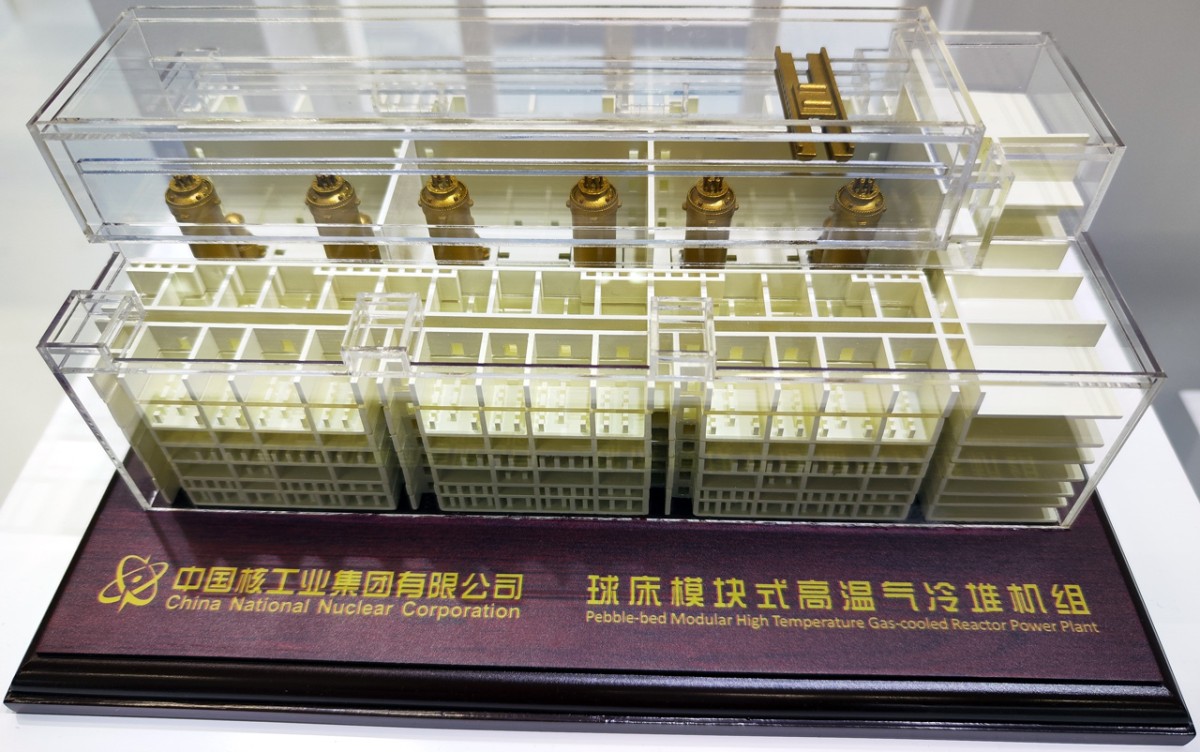 China has brought its two demonstration HTR-PM high-temperature gas-cooled micro-pebble reactors at the Shidaowan NPP in Shandong Province to full capacity. The HTR-PM project involves two small modular reactors (SMRs) that drive a single turbine. The project is owned by a consortium led by China Huaneng (47.5%) with China National Nuclear Corporation's subsidiary China Nuclear Engineering Corporation (32.5%) and the Institute of Nuclear and New Energy Technologies of Tsinghua University (20%), which is the head of research and developments.
China has brought its two demonstration HTR-PM high-temperature gas-cooled micro-pebble reactors at the Shidaowan NPP in Shandong Province to full capacity. The HTR-PM project involves two small modular reactors (SMRs) that drive a single turbine. The project is owned by a consortium led by China Huaneng (47.5%) with China National Nuclear Corporation's subsidiary China Nuclear Engineering Corporation (32.5%) and the Institute of Nuclear and New Energy Technologies of Tsinghua University (20%), which is the head of research and developments.
The consortium said the HTR-PM reached "initial full capacity" on 9 December and "this operational status has confirmed that all systems in the demonstration project are in line with design functions, laying the groundwork for commissioning the project”.
The HTR-PM demonstration project is the world's first modular high temperature gas cooled pebble reactor, and after reaching the initial full power of the two small reactors and "testing the ability to control operation" in the "two reactors with one power plant" mode ", the operators describe it as "laying the foundation for future commercial exploitation". The first reactor achieved criticality in September 2021 and second the following November. Unit 1 was connected to the grid in December 2021.
The HTR-PM consists of two small 250MW reactors that drive one 210MW steam turbine. Helium is used as a coolant, and graphite is used as a moderator. The core of each reactor is loaded with more than 245,000 spherical fuel elements ("pebbles"), each 60 mm in diameter and containing 7 grams of fuel enriched to 8.5%. Each micro-pebble has an outer layer of graphite and contains about 12,000 four-layer ceramic-coated fuel particles dispersed in a matrix of graphite powder. The fuel has high safety characteristics and has been proven to remain intact and continue to contain radioactive contents at temperatures up to 1620°C, which is much higher than the temperatures that can occur even in extreme emergencies,
The HTR-PM project follows China's HTR-10, a 10 MW experimental high-temperature gas-cooled reactor at Tsinghua University's Institute of Nuclear and New Energy Technologies, which went online in 2000 and reached full capacity in 2003. In addition to the HTR-PM, China is developing a larger version, the HTR-PM600, with a single 650MW turbine powered by six small reactors.
Image: Model of the HTR-PM power plant (courtesy of CNNC)



